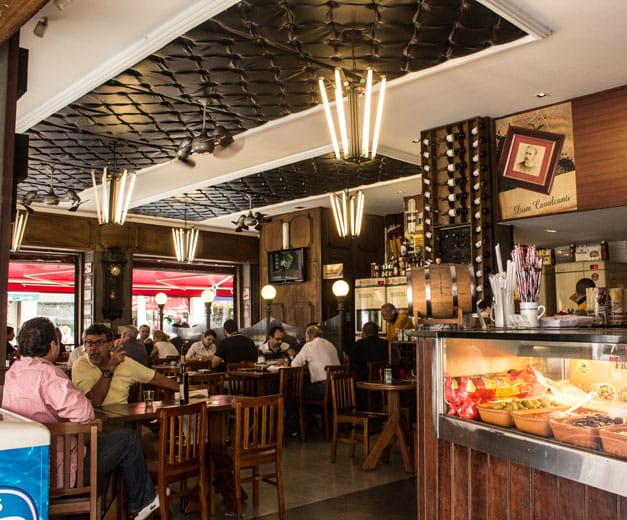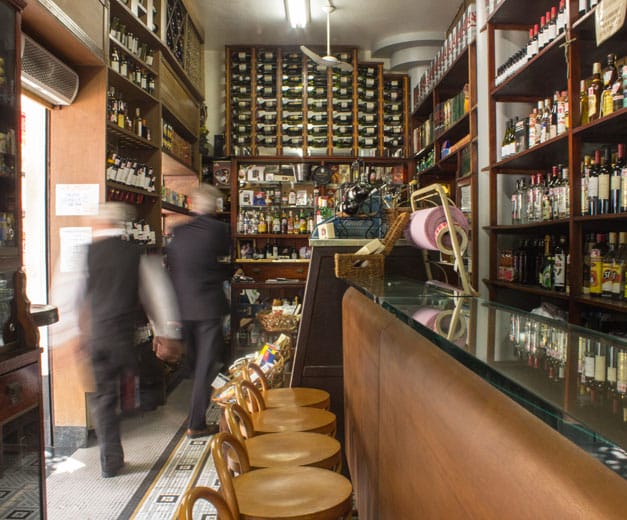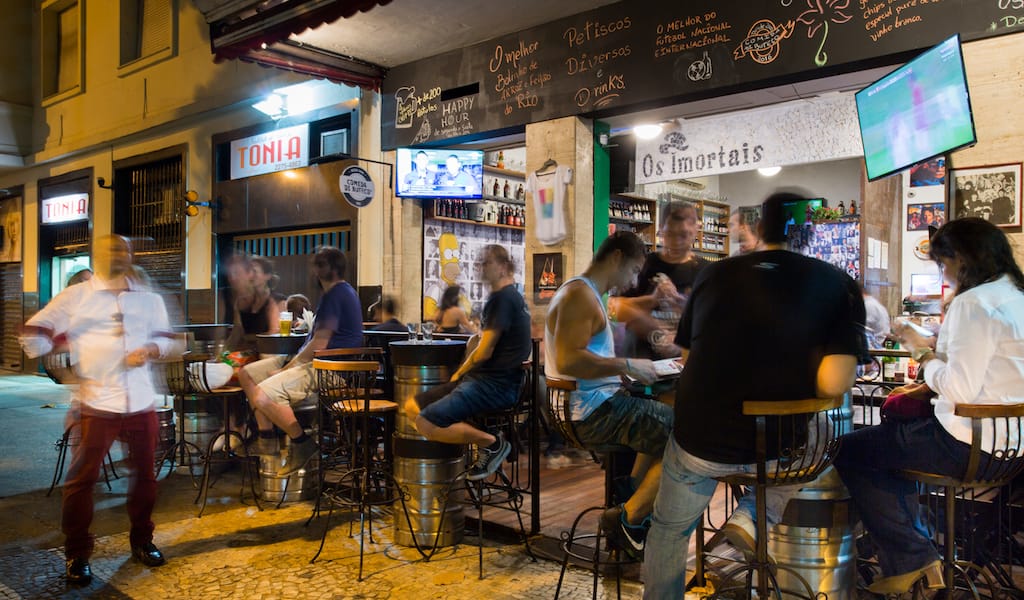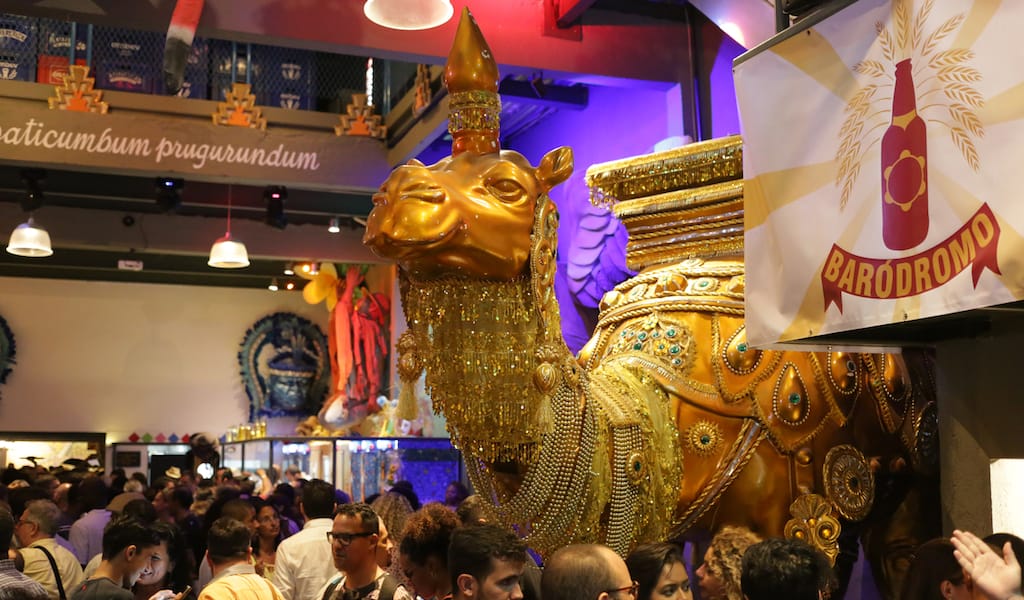Here in Brazil, canja de galinha, or rice and chicken soup, is food for convalescents – typical hospital fare, in fact – and to that end, it’s usually made with no salt, no fat, no seasoning. A few bars and restaurants, however, have found a way to elevate this dish. And Dom Cavalcanti, a fixture of Lapa nightlife, makes the most delicious canja in all of Rio.
This popular botequim, a small bar that serves traditional snacks and dishes, is not located in the sceniest part of Lapa, but in a quieter neighborhood, Bairro de Fátima, just a five-minute walk from where everything’s happening. Kitschy and a little too brightly lit, Dom Cavalcanti is open almost every day until three in the morning, which makes it an excellent last stop at the end of a night out before heading off to bed. And if it’s been a particularly memorable night out, some canja is most definitely in order.
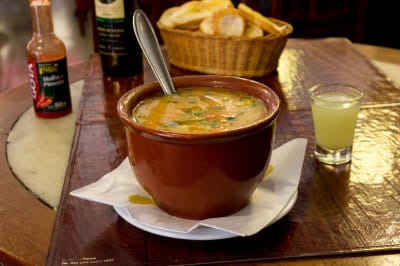 The soup arrives at the table in a huge, steaming bowl accompanied by some fresh bread. There’s almost half a liter of soup in there, full of much more than rice and chicken, including carrots, potatoes, parsley, mint and some secret ingredients. The flavor is intense; eating this profoundly comforting food is like getting a big hug. It’s even better with some beer – and Dom Cavalcanti serves plenty of excellent Brazilian and imported suds at good prices.
The soup arrives at the table in a huge, steaming bowl accompanied by some fresh bread. There’s almost half a liter of soup in there, full of much more than rice and chicken, including carrots, potatoes, parsley, mint and some secret ingredients. The flavor is intense; eating this profoundly comforting food is like getting a big hug. It’s even better with some beer – and Dom Cavalcanti serves plenty of excellent Brazilian and imported suds at good prices.
The menu here offers a host of other inexpensive, tasty dishes, the best of which is the shredded dried meat with catupiry (Brazilian cream cheese), served on a huge plate. Four hungry men could eat this without worrying about how to eat the next day. Other dishes, like the traditional churrasco misto, a combination meat platter (served as appetizers or main course), are also interesting.
 But when we’re looking for a restorative pick-me-up, we definitely want some of the canja de galinha. It’s the best kind of medicine.
But when we’re looking for a restorative pick-me-up, we definitely want some of the canja de galinha. It’s the best kind of medicine.
 May 28, 2014 The Botequim
May 28, 2014 The Botequim
After Portugal, Spain is second in exerting the most influence over the traditional bars […] Posted in Rio November 15, 2017 Os Imortais
November 15, 2017 Os Imortais
Theres’s a new phenomenon in Rio’s botequim scene. Until some years ago, running one of […] Posted in Rio October 31, 2017 Baródromo
October 31, 2017 Baródromo
Carnival in Rio is one of the world’s best parties, and for good reason. There are the […] Posted in Rio
Published on November 26, 2014
Related stories
May 28, 2014
RioAfter Portugal, Spain is second in exerting the most influence over the traditional bars and botequins of Rio. Even though the number of immigrants from Spain is less than that of Germany or Italy, the Spanish, like the Portuguese, took over much of the popular commerce in the city at the end of 19th century…
Hey barflies, crawl Rio's best botequims with us!
November 15, 2017
RioTheres’s a new phenomenon in Rio’s botequim scene. Until some years ago, running one of these small bars was something done exclusively by immigrants from Portugal, Spain and Brazil’s northeast. But ever since botequims became extremely popular among the carioca middle class, new players have gotten into the business: the customers themselves. Since the beginning…
October 31, 2017
RioCarnival in Rio is one of the world’s best parties, and for good reason. There are the extravagant costumes, the sweaty entertainers and revelers dancing to roaring samba music, and, most importantly, free flowing alcohol: Public inebriation, whether from drinking cheap beer or slurping spiked popsicles, is heavily encouraged. While nothing can top this pre-Lent…







































